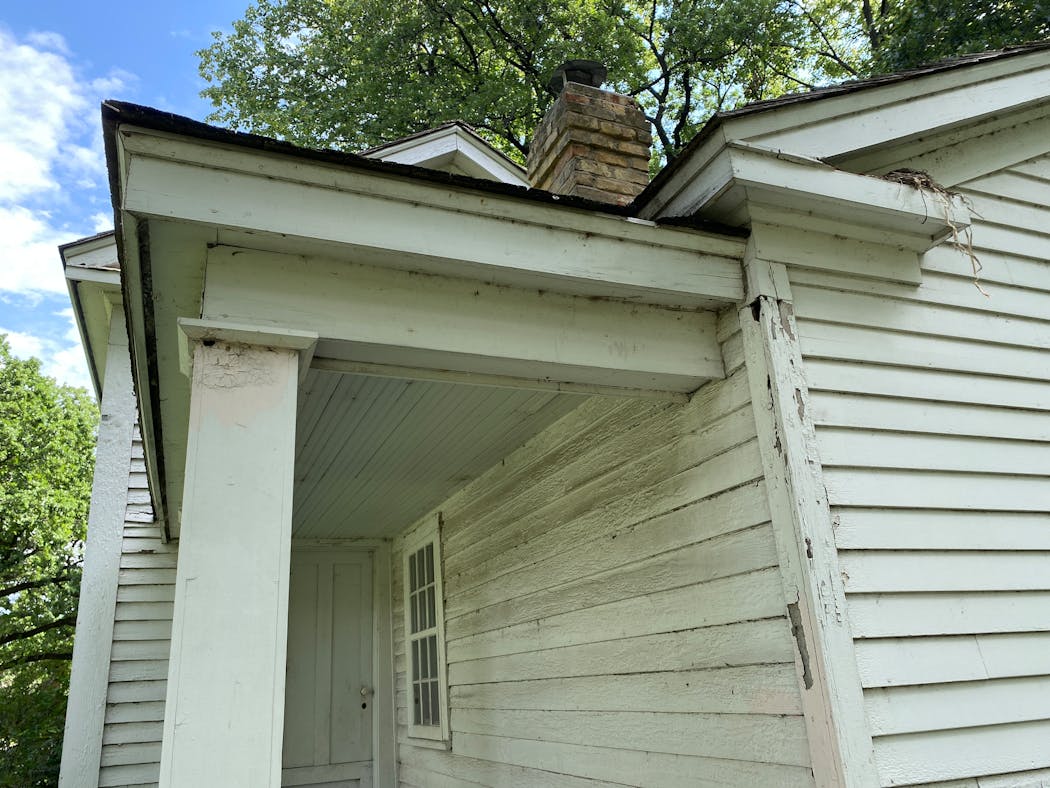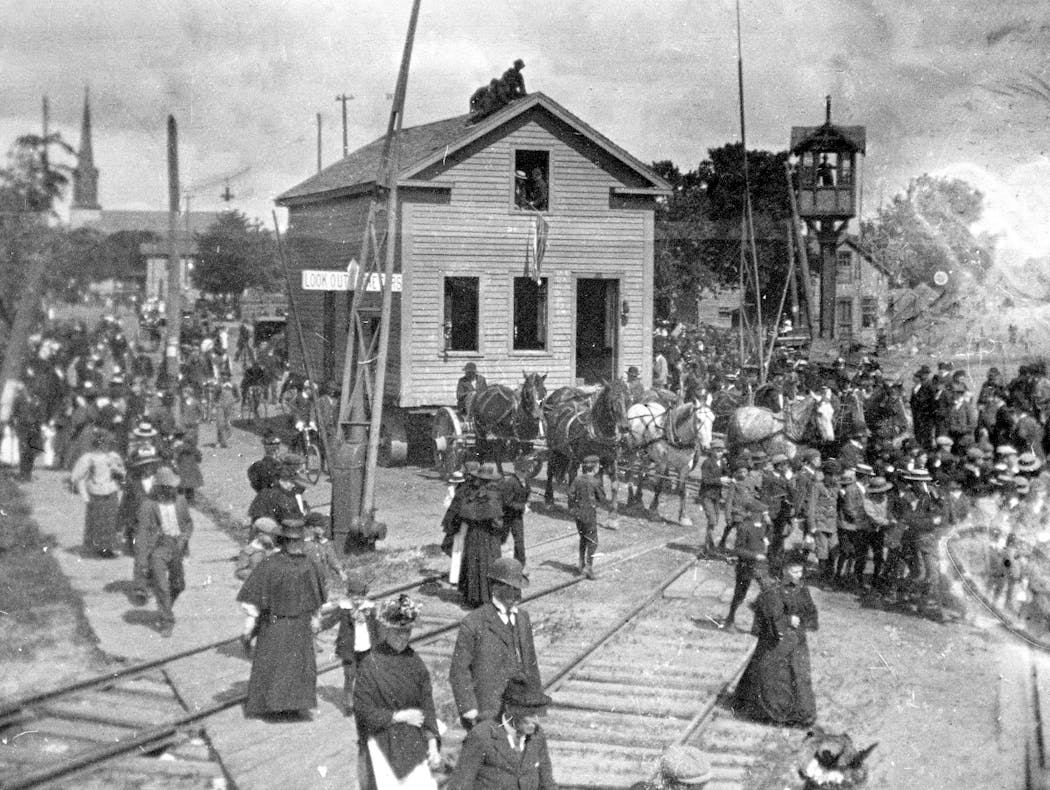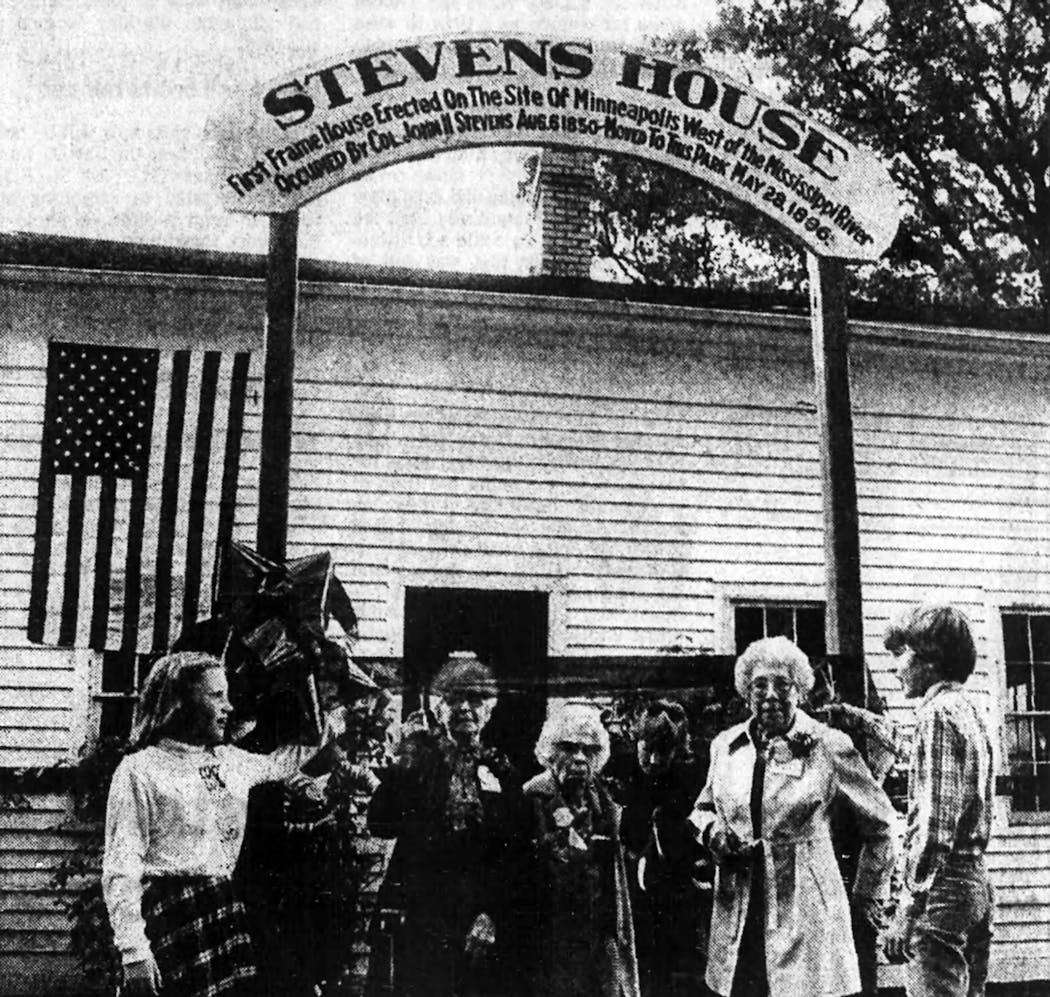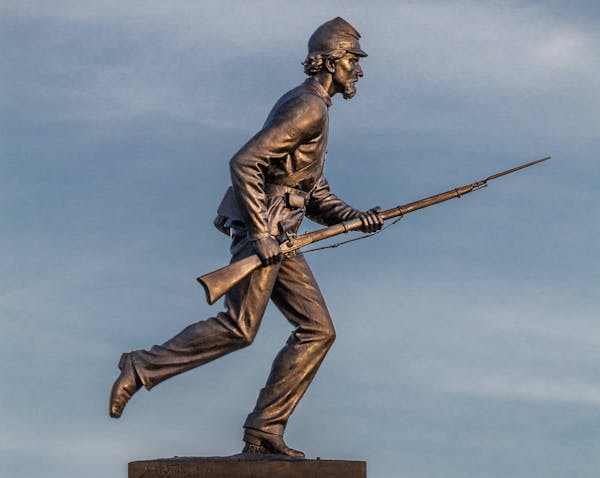Why has the Park Board allowed the 'birthplace of Minneapolis' to deteriorate?
Listen and subscribe to our podcast: Via Apple Podcasts | Spotify | Stitcher
The John H. Stevens House was once considered such a revered artifact of Minneapolis history that a campaign to save it in the 1890s — launched by this newspaper — resulted in thousands of schoolchildren eagerly pulling the building across the city.
After all, this was more than just the oldest house within the city's original boundaries. Settlers actually created both Minneapolis and Hennepin County there. This was where people gathered and made big decisions in the tiny burg that later grew into a major metropolis.
"May lightnings never strike, or fire consume you," Alderman Fred B. Snyder said in 1896 after the house arrived at Minnehaha Park, where it was turned over to the Park Board for safekeeping. "May the wet and soggy hand of time deal lightly with you. May the elements beat gently on your hollow walls."
The soggy hand of time has clearly taken a toll on the 172-year-old structure, which has seen better days. I first noticed the poor condition of its exterior while reporting on the house's unique history for the Star Tribune magazine in 2021 — and made a note to follow up.
I oversee Curious Minnesota, a Star Tribune project fueled by great reader questions. This week's question is my own: Why is the outside of this one-of-a-kind historical artifact in such shabby shape?
The siding is marred by peeling and cracking paint. Rot has begun to eat away some posts, siding and trim, according to a 2021 assessment that concluded the exterior was still in good overall condition. One of the wood shingle roofs is covered in moss. Animals have made visible holes in the building and birds appear to be nesting in one section.
Those problems haven't so far affected the interior, however, according to volunteers who operate the site.
"It's very sad … that the house has been allowed to deteriorate," said Katharine Winston, a great-great-granddaughter of John Stevens who has done volunteer work at the house. "It's almost like 'the little engine that could' is not being recognized."
One explanation for the structure's condition is that Park Board commissioners voted down funding in 2019 and 2020 that would have covered assessing and rehabbing the agency's historic homes — including the Stevens House, the Ard Godfrey House and the Longfellow House.
"Board leadership did not see value in preserving these spaces, and thought our money could be better spent elsewhere," said Park Board Commissioner Steffanie Musich, whose district includes the Stevens House and supported the funding.
The board ultimately approved about $93,000 to repair the Stevens House in 2021. That money has paved the way for the roofs to be replaced this year, according to Park Board officials.
But the agency says it doesn't plan to repair the siding until 2023. That is largely because the work is being done through a Hennepin County program that teaches carpentry skills to people who are on probation. The program has limited capacity and crews are tackling the Godfrey and Longfellow houses first — because they need more urgent attention.
Celebrated and ignored
The Stevens House has enjoyed periods of both popularity and neglect over its long history.
John Stevens built the house in 1850, near the current location of the downtown post office. This was only possible because the federal government had granted him 160 acres of land on what was then part of the Fort Snelling military reservation.
The house became the "civic and social hub" of the new settlement, according to a plaque that greets visitors in Minnehaha Park. It hosted the first meeting of the Hennepin County board. County commissioners decided there to call the county seat "Minneapolis," reversing a previous decision to call it "Albion."
By the 1890s, the building had been moved to the Cedar-Riverside area. That's when the Minneapolis Journal — a predecessor to this newspaper — launched a successful effort to save the first house built in Minneapolis. (The Ard Godfrey House across the river is slightly older, but was built in what was St. Anthony until the 1870s.)
"The ancient structure, weather beaten and unadorned, was drawn by shouting thousands of school children to its last resting place in Minnehaha Park," the Journal reported in 1896.
For most of the 20th century, visitors could not go inside the building. By the 1970s, Minneapolis Star columnist Barbara Flanagan lamented what had become of the Stevens and Godfrey houses — both of which were boarded up.
"Why hasn't some group raised funds to restore, furnish, open and staff our town's two oldest houses?" Flanagan wrote in 1972. "Is it possible that nobody cares?"
A decade later, the Junior League of Minneapolis broke ground on a major restoration that opened the Stevens House to the public as a museum. This led to a renewed interest in the site, which hosted festivals and other events to attract visitors.
"There was a huge interest from the community in it and there was a lot more contributions going on," said Jack Kabrud, who oversees the Friends of the John H. Stevens House, which manages programming at the site. "It was a brand-new, exciting place."
Some of that enthusiasm has fallen away. The Friends board of directors hasn't formally met for many years because they lack enough members to meet quorum. Kabrud said about four or five volunteers keep the place going, and he would welcome additional help.
Schools have cut back dramatically on field trips, once a reliable source of young visitors. But the nearby light-rail stop ensures steady traffic in the area, and Kabrud said a couple hundred people per day typically stopped by before the pandemic. The building is open during the summer months, but hours are erratic this year due to the pending maintenance work.
'Taking care of our basic assets'
Park Board President Meg Forney noted there has been dramatic turnover on the board since the votes that delayed funding for the historic homes. Seven of nine commissioners are new this year.
"This board ... one of their primary focuses is taking care of our basic assets," Forney said, adding that a separate funding stream may be needed to maintain these properties in the future.
John Winston, a great-great-grandson of John Stevens, said the county or state historical society should take a larger role in championing the Stevens House.
"There are all of these other institutions whose responsibility and mission is to preserve the history of the community," Winston said. "So when we look to the Park Board to do that, I fear we're looking to ... the wrong institution."
Reaching out to the Stevens House volunteers has been on the to-do list for the relatively new executive director of the Hennepin History Museum, John Crippen. Crippen said many small house museums around the country have faced big challenges in the last two decades, with the exception of grandiose properties like the James J. Hill House and Glensheen Mansion.
"The Stevens House is not alone in this struggle," Crippen said.
If you'd like to submit a Curious Minnesota question, fill out the form below:
Read more Curious Minnesota stories:
Why were so many of Minneapolis' Park Avenue mansions torn down?
Why does the Stone Arch Bridge cross the river at such an odd angle?
From bankrupt racetrack to aviation hub — what remains from MSP Airport's early days?
Why is U.S. Bank Stadium in a constant state of repair?
Why are there so many stucco homes in the Twin Cities?
Why did Minneapolis tear down its biggest train station?








